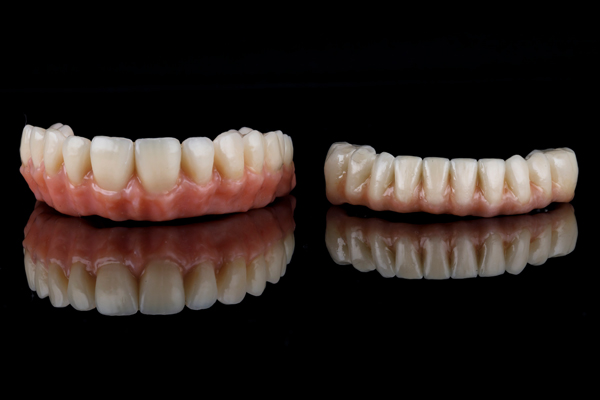A Step-by-Step Guide to Implant Restoration

Implant restorations are a highly effective solution for replacing missing teeth, offering patients a durable, natural-looking option that restores functionality and aesthetics. They involve a process that combines the surgical placement of a dental implant with the creation and attachment of a prosthetic crown or other dental appliance. Take a look at this step-by-step guide to understand how implant restorations work and what to expect throughout the procedure.
Step one: Initial consultation and treatment planning
The implant restoration process begins with a consultation to assess whether the patient is a good candidate. The general dentist evaluates the patient's oral health, including the condition of the gums and jawbone—the primary determining factor of whether the implant will have ample support. The dentist may recommend a gum or bone graft if either factor proves insufficient. Should the patient prove ideal, the dentist will use imaging technology, such as X-rays or 3D scans, to plan the precise placement of the implant. Further, patients will choose between a crown (for a single missing tooth), dentures, or dental bridges for their implant restoration.
Step two: Implant placement
The implant placement will take place during another appointment after the initial consultation. It involves creating an incision over the area where the implant will go. This incision will allow the dentist access to the jawbone, where they will drill a hole to place the titanium implant. Finally, they will suture the gums over the implant and jawbone to begin osseointegration.
Step three: Osseointegration
Osseointegration is a few-month-long process that involves the implant fusing with the jawbone. During this time, the patient should refrain from disturbing the procedure site or eating crunchy, spicy, acidic, tough, chewy, and sticky foods—basically, patients will want to stick to a soft diet. A diet with soups, eggs, potatoes, yogurt, cheese, fish, etc. Further, patients must avoid all smoke, vaping, tobacco, and nicotine products throughout the entire process. According to the Centers for Disease Control and Prevention, or CDC, this significantly decreases the chances of slowed healing, infection, and implant failure.
Step four: Abutment placement and designing the restoration
Once osseointegration is complete, patients return to the dental office for the abutment placement. The abutment is the titanium piece the dentist affixes to the top of the implant post. This process will require reopening the gum line—not the jawbone—for placement. Note that the abutment will jut out above the gum line to anchor the implant restoration.
Once in place, the dentist will record measurements of the abutment and the space between the abutment and surrounding teeth. Sometimes, they simply take a mold of the area. Lastly, the dentist will send the measurements and implant restoration choice, chosen in the initial consultation, to an offsite lab for fabrication. Patients may be fitted with a temporary restorative to guard the surrounding teeth and gums from the abutment.
Step five: Final placement
For the final appointment, the dentist will remove the temporary restorative and test the permanent implant restoration's fit. They will coach the patient through various bite tests to ensure comfort. If minor adjustments are necessary, the dentist will make them during the appointment before bonding it into place.
Schedule a consultation
Understanding the dental implant process is important, as it can be intricate and somewhat lengthy. Consulting with a skilled dentist ensures a seamless restoration journey and results that enhance oral health, function, and appearance. Contact Okamoto and Bigley Dentistry to begin the first step in implant restoration.
Request an appointment here: https://okamotoandbigleydentistry.com or call Okamoto and Bigley Dentistry at (626) 472-2178 for an appointment in our Pasadena office.
Check out what others are saying about our dental services on Yelp: Dental Implant Restoration in Pasadena, CA.
Related Posts
Dental restorations are often necessary to repair teeth that are in bad shape. They can be used to treat cavities or renew teeth that do not function or appear normal anymore. Modern-day dentistry has allowed for the evolution of multiple kinds of dental restoration procedures. Each patient's needs vary and with the help of a…
While brushing is crucial for oral health, it can't restore the shade of one's teeth or correct alignment.We can restore teeth that have been damaged in an accident or have become infected. We have a variety of ways to do so including veneers, crowns, bridges, dental implants and more.Dental RestorationsAt Okamoto and Bigley Dentistry in…
While taking care of a dental implant is relatively easy, one needs to be careful and keep the teeth in strong shape.Dental implant restorations not only replace missing teeth, but they are sturdy and long-lasting. Invest in a dental solution for your missing teeth that does not require extra cleaning steps or excessive checkups.Dental Implant…
A restorative dentist can help to repair and rebuild structures in your mouth that oral problems have damaged. These dentists focus on restoring the function of damaged or lost teeth, improving your ability to chew and speak properly. Many restorative dental treatments also provide you with cosmetic benefits, so you get an improved smile in…
